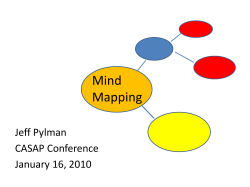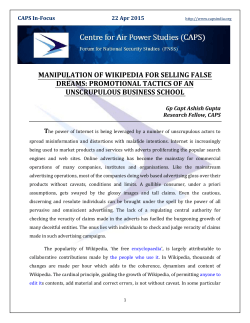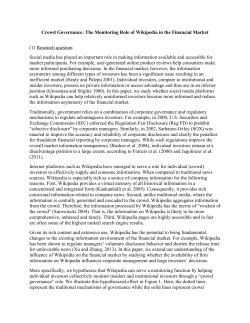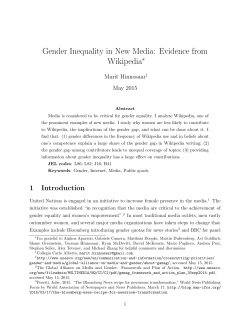
Prehistory & early history of Science Fiction SOAR – Global SF Spring 2010
Prehistory & early history of Science Fiction SOAR – Global SF Spring 2010 D. W. Koon Prehistory of SF Homer (ca. 850 BCE?) Lucian of Samosata (b. 125AD) Kepler (1634) Cyrano de Bergerac (1657) Raspé: Munchausen (1785) Munchausen by Doré: Wikipedia http://en.wikipedia.org/wiki/Image:Doremunchausen-illustration.jpg Homer (850 BCE?) Iliad: Hephaestus (Vulcan) creates mechanical help-mates. • e.g. Talos Guardian of Crete Made of Copper From “A history of Science Fiction: prehistory”, Dr. Agatha Taormina, NVCC-Loudoun, http://www.nvcc.edu/home/ataormina/scifi/history/prehistory.htm. Image: Computational Vision and Robotics Laboratory, Heraklion, Crete, Greece, http://www.ics.forth.gr/cvrl/images/image003.jpg. Lucian of Samosata (b. 125 A.D.) Icaromenippos (Journey through the air) : using strap-on wings to reach Moon. • Interplanetary voyage • Prosthetic limbs • Cyborgs From “A history of Science Fiction: prehistory”, Dr. Agatha Taormina, NVCCLoudoun, http://www.nvcc.edu/home/ataormina/scifi/history/prehistory.htm. Lucian Picture: Wikipedia, http://en.wikipedia.org/wiki/Image:Lucian_Samosata.warj.png Icarus Picture: Aviation University http://eaa.aviationuniversity.com/multimedia/img/icarus.gif Some French proto-SF and modern SF 1657 deBergerac: Comical History...Moon. 1752 Voltaire: Micromégas visitors from other planets ...and many more. 1863 Jules Verne: Five weeks in a balloon. Dropoff in French SF during US Golden Age of SF. Recovery since late 1950s, but in the image of Anglo SF? http://en.wikipedia.org/wiki/French_science_fiction & http://en.wikipedia.org/wiki/Jules_Verne French literature: Jules Verne (1828-1905) Over 50 works, from 1863-1905: • A Journey to the Centre of the Earth (1864) • From the Earth to the Moon (1865) • Twenty Thousand Leagues Under the Sea (1869–1870) • Around the World in Eighty Days (1873) http://en.wikipedia.org/wiki/Jules_verne Early SF film (& horror, adventure, fantasy, etc.) SOAR – Global SF Spring 2010 D. W. Koon Le voyage dans la lune (1902) Georges Méliès, France (Bacon number = 4). Directed 561 films, 1896-1914. A bullet-like rocket is fired from a cannon, lands on Moon. Adventures with the natives ensue. Revolutionary special effects. Other films include The Impossible Voyage (1904). (Journey through Alps to the Sun) http://www.filmsite.org/posterpages/p_voya.html Himmelskibet (“Airship” 1917) • Holger-Madsen, Denmark. • Appeared in English under a variety of names. • Earthlings visit Mars, convert to vegetarianism, pacifism from natives, spread the message back home. http://membres.lycos.fr/starmars/himmel.html http://www.commersen.se/sol/bok_film/film.html Der Golem (1914, 1920) Paul Wegener, Germany (also plays the Golem). 60 min. Taken from Jewish folk legend, 16th Century automaton created to protect the Jews of Prague. Contains the precursor to machine programming. (Emet→Meit = truth→death) One of first examples of German Expressionism in film (See Metropolis) http://en.wikipedia.org/wiki/Golem http://www.ministore.at/aa.stummfilm.htm Classics 1924 Aelita. Yakov Protazanov, USSR. 1926 Metropolis. Fritz Lang, Germany. http://upload.wikimedia.org/wikipedia/en/d/da/Metropolisne w.jpg 1929 Woman in the Moon. Lang. • Origin of the 10-9-8-7… Flash Gordon v Buck Rogers Popular US serials, typically 12-15 episodes each. • • • • 1936 1938 1939 1940 Flash Gordon: Space Soldiers Flash Gordon’s Trip to Mars Buck Rogers Conquers the Universe Flash Gordon Conquers the Universe Flash: http://www.leconcombre.com/biblio/filmographie/serials-16.html Buck: http://www.serialexperience.com/image_gallery/Buck_Rogers.jpg Conclusions? Longer and longer films, thanks to advances in the technology. Better and better special effects, production values. Sensational genres = big box office: horror, adventure, science fiction (before it had a name), noir. The pulp era of Science Fiction (“Scientifiction”) SOAR – Global SF Spring 2010 D. W. Koon Pulp-era SF Cheap, lowbrow magazines for mass consumption. “Pulp” refers to the quality of paper used, as opposed to the “slicks”. “Pulps” published SF, detective (e.g. noir), romance, horror, Western, true crime Is this the “Golden Age” of Science Fiction? What is the “Golden Age” of Science Fiction? The Frank Reade series: Dime store novels and penny dreadfuls Steam Man: the world’s first robot: Steam Man of the Prairies: 1865; Steam Man of the Plains: 1876. http://www.bigredhair.com/steamman/ Frank Reade, continued “Steam rules!” Frank Reade’s Victorian Airships: http://bigredhair.com/airships/ “Highbrow” SF novels of the era Jules Verne (18281905). • SF from 1863 to 1904. • Wikipedia: http://en.wikipedia.or g/wiki/Jules_Verne Herbert George Wells (1866-1946). • SF from 1888-1943. • Time Magazine • http://www.time.com /time/covers/0,16641 ,1101260920,00.html ?internalid=AC Edgar Rice Burroughs (1875-1950) Tarzan series (1912-1947) Barsoom or John Carter of Mars series (1912-1948) Believed that "...if people were paid for writing rot such as I read in some of those magazines that I could write stories just as rotten. As a matter of fact, although I had never written a story, I knew absolutely that I could write stories just as entertaining and probably a whole lot more so than any I chanced to read in those magazines." Erbzine: http://www.erbzine.com/ Edgar Rice Burroughs’ A Princess of Mars (1912) erbzine.com, amazon.com Hugo Gernsback (1884-1967) 1904 Immigrates from Luxembourg 1905 Founds Electric Importing Company 1911 Writes Ralph 124C 41+ 1926 Founds Amazing Stories 1929 Starts Wonder Tales Great Depression: Radio Craft, Short Wave Craft, Sexology 80 patents at time of death 1953 First Hugo Awards awarded for science fiction. Wikipedia.org Ralph 124C 41+: Hugo Gernsback (1911) Predictions: •Radar •2-way TV •Solar energy collection •Fluorescent lighting •Tape recording •Synthetic fabrics Frank R. Paul gallery: http://www.frankwu.com/Paul1.5A.html Pulp SF classics: Amazing Stories (Gernsback,1926) http://www.oldsfbooks.com John W. Campbell, Jr. (1910-1971) SF Author, Editor, Mentor Editor, 1938-1971, of Astounding Science Fiction (Analog since 1960). “Stable of writers” includes Heinlein, Asimov, Sturgeon, van Vogt, L. Ron Hubbard Memorial prizes for Best SF Novel, Best New Writer in his honor http://www.fantascienza.com/ delos/delos55/img/robot/ asimov/john-w-campbell.jpg Pulp SF covers: Astounding Science Fiction http://linesonpaper.tripod.com/zast531.jpg, http://linesonpaper.tripod.com/zast1053.jpg More pulp SF: Buxom babes and bug-eyed monsters http://www.oldsfbooks.com/ What is the “Golden Age” of Science Fiction? “The Golden Age of Science Fiction is thirteen.” – Terry Carr? Damon Knight? Isaac Asimov? Harlan Ellison? James Blish? Peter Graham? Works cited The Ultimate Science Fiction Guide site, http://www.magicdragon.com/Ultimate SF/SF-Index.html. The Internet Movie Database, www.imdb.com. Wikipedia, en.wikipedia.org. Works Cited • “A history of Science Fiction: prehistory”, Dr. Agatha Taormina, NVCC-Loudoun, http://www.nvcc.edu/home/ataormina/scifi/history/prehistory .htm. • Images: Munchausen by Doré: Wikipedia http://en.wikipedia.org/wiki/Image:Dore-munchausenillustration.jpg Talos: Computational Vision and Robotics Laboratory, Heraklion, Crete, Greece, http://www.ics.forth.gr/cvrl/images/image003.jpg. Lucian: Wikipedia, http://en.wikipedia.org/wiki/Image:Lucian_Samosata.warj .png Icarus: Icarus Picture: Aviation University http://eaa.aviationuniversity.com/multimedia/img/icarus.g if
© Copyright 2025















